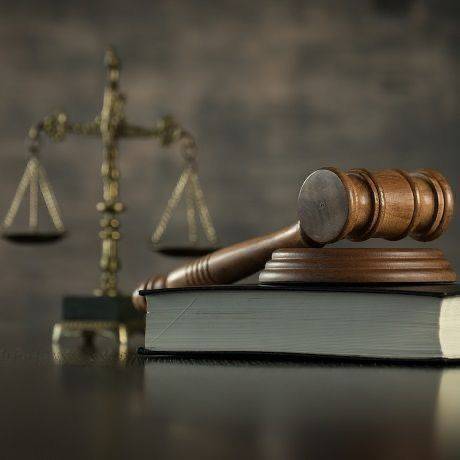Litigation Law
Litigation law plays a crucial role in the realm of legal procedures, offering a structured process for resolving disputes and conflicts. Whether you’re an individual or a business entity, being well-versed in litigation law can help you navigate the complexities of the legal system. In this comprehensive guide, we’ll delve into the intricacies of the law, covering its fundamentals, processes, and key considerations.
Introduction to Litigation Law
Litigation law encompasses the rules and procedures involved in resolving disputes through the court system. It provides a structured framework that ensures fairness and justice for all parties involved. In today’s complex society, litigation law serves as a cornerstone for upholding individual rights, enforcing contracts, and maintaining social order. Also, read the article about How to Get Charges Dropped Before the Court Date
Types of Litigation Cases
Litigation cases can be broadly categorized into various types, each with its own distinct characteristics. Civil litigation involves disputes between individuals or entities over matters such as contracts, property rights, and personal injury claims. Criminal litigation, on the other hand, deals with offenses against the state, such as criminal acts. Commercial litigation focuses on business-related conflicts, while personal injury litigation seeks compensation for injuries caused by negligence.
The Litigation Process Unveiled
The litigation process is a multi-stage journey that unfolds step by step. It begins with the pre-litigation phase, where parties attempt to resolve their issues before filing a lawsuit. If the resolution fails, the plaintiff files a lawsuit, initiating the formal legal proceedings. Discovery follows, during which both sides gather evidence to support their claims. Pre-trial motions can shape the trajectory of the case, leading to the trial phase. Here, attorneys present their arguments, and a judge or jury reaches a verdict. Post-trial motions and appeals provide avenues for further review if either party disagrees with the outcome.
Roles in Litigation
Litigation involves various stakeholders, each with distinct roles. Plaintiffs bring forth their claims, seeking legal remedies, while defendants respond to these claims. Attorneys, representing both sides, present arguments and navigate the legal procedures. Judges preside over the case, ensuring fair proceedings, while juries decide factual disputes in certain cases. Discover more about What is a Litigator
Key Concepts in Litigation Law
Several key concepts underpin litigation law. The burden of proof rests on the party making the claims, requiring them to provide sufficient evidence to convince the judge or jury. The statute of limitations sets a time limit within which legal action must be initiated. Class action lawsuits enable a group of individuals with similar claims to collectively seek redress. Alternative Dispute Resolution methods offer alternatives to traditional litigation, including mediation and arbitration.
Litigation vs. Settlement
Litigation is not the only route to resolving disputes; settlements provide an alternative. Litigation offers a formal process with a clear resolution, but it can be time-consuming and expensive. Settlements, while often involving compromises, can lead to quicker resolutions, saving time and resources.
Crafting a Strong Litigation Strategy
A successful litigation strategy requires meticulous planning and execution. It involves a thorough analysis of the case, rigorous research, and the gathering of credible evidence. Building a persuasive argument and utilizing expert witnesses can significantly bolster a party’s position.

Challenges and Pitfalls in Litigation
While litigation offers a path to justice, it comes with challenges. Lengthy legal proceedings can test the patience of all parties involved. The costs associated with litigation, including attorney fees and court expenses, can be substantial. Moreover, the emotional toll of litigation should not be underestimated, as the process can be stressful and draining.
Emerging Trends in Litigation
As society evolves, so does litigation. Technology has introduced new avenues for evidence collection and case management. Environmental litigation addresses legal issues related to the environment and natural resources. Additionally, international litigation deals with disputes that cross national borders.
The Power of Legal Representation
Navigating litigation without proper legal representation can be risky. Competent attorneys possess the expertise to navigate complex legal procedures, ensuring that your rights are protected. Choosing the right legal team is a critical decision that can significantly impact the outcome of your case.
Conclusion
In the intricate landscape of legal disputes, litigation law serves as a guiding light. Understanding the nuances of the litigation process, the key players involved, and the strategies that lead to success can empower individuals and businesses to traverse the legal maze with confidence.
FAQs
What is the primary goal of litigation?
Litigation aims to resolve legal disputes through a structured legal process, ensuring fairness and justice.
How long does litigation typically take?
The duration of litigation varies widely depending on factors such as case complexity and court backlog.
Can I represent myself in litigation?
While it’s possible, having an experienced attorney greatly increases your chances of a favorable outcome.
What are the advantages of settling a dispute outside of court?
Settling outside of court can be faster and more cost-effective, but it often involves compromises.
Is litigation the only way to resolve legal conflicts?
No, alternative dispute resolution methods like mediation and arbitration provide alternatives to traditional litigation.
